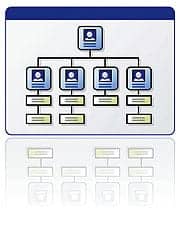
Personnel Management/Supervision is one of the areas of the certification in clinical engineering (CCE) examination under General Management. The topic of General Management comprises 12% of the CCE examination. Personnel Management/Supervision is an important aspect of the biomedical/clinical engineering manager’s job.
Personnel Management/Supervision in biomedical/clinical engineering involves hiring and developing biomedical equipment technicians (BMETs), clinical engineers, and support staff. This involves a number of functions, including: Conducting job analyses; planning personnel needs; recruitment; orienting, training, and continuing education; determining compensation, benefits, and incentives; appraising performance; resolving disagreements; communicating with all employees at various levels; and providing oversight/supervision.
Conducting Job Analyses
The biomedical/clinical engineering manager should conduct a job analysis for a new position. Additionally, as positions change due to the introduction of new technology in the organization or other changes, a periodic analysis of existing positions should also be performed. Managers should use the process to identify and determine in detail the particular position’s duties, tasks, and responsibilities. Managers also need to assess the relative importance of these duties for a particular position.
The typical job descriptions for a BMET, BMET supervisor, clinical engineer, and others are available through different sources. The Journal of Clinical Engineering publishes job descriptions and average salaries based on annual surveys. The AAMI clinical engineering management committee has also published job descriptions in the clinical engineering field for the guidance of biomedical/clinical engineering managers. These job descriptions are available at www.aami.org/cemc/projects.html#job. The employers of biomedical/clinical engineering personnel (independent service organizations, OEMS, hospitals, and health systems) also have typical job descriptions for their internal use.
Personnel Management/Supervision
As biomedical/clinical engineering functions vary from one organization to the other, it is important that these typical job descriptions are compared to the individual situations based on job analysis. Specific job descriptions should be created for the particular organization that is functionally appropriate.
Planning Personnel Needs
The biomedical/clinical engineering manager should determine how many personnel are needed to provide medical equipment support. The factors to consider are the number of devices on the inventory, level of support provided (such as contract management only, first call, PM only, or full service), complexity of equipment (thermometer versus CT scanner), travel time (between campuses, elevators), construction/installation support, working on facility committees, productivity (percentage of available time), involvement in equipment selection, acquisition, and implementation.
Various methods are currently used to determine the personnel needed, including number of devices per biomedical/clinical engineering personnel, number of beds per biomedical/clinical engineering personnel, and acquisition cost per biomedical/clinical engineering personnel. Specific details about these methods are available in the biomedical/clinical engineering literature.
Recruitment
The recruitment for biomedical/clinical engineering managers refers to the process of attracting, screening, and selecting qualified biomedical/clinical engineering personnel. After completing the job analysis and developing the job description, the recruitment process starts.
Advertising for the position should involve multiple media, such as Web sites of professional organizations, professional publications, and campus graduate recruitment programs.
The Web sites of professional organizations like AAMI (www.aami.org/career) and ACCE (www.accenet.org) provide an opportunity for the employers to post their positions. Other Web sites include USAJOBS (www.usajobs.gov), which is the federal government’s official source for all federal jobs, including biomedical/clinical engineering personnel, and 24×7 magazine’s Web site (www.24x7mag.com/classifieds.asp).
Similarly, positions can be posted in professional publications like 24×7, the Journal of Clinical Engineering, Biomedical Instrumentation & Technology, and other publications. Schools that offer biomedical engineering and biomedical equipment technology can be obtained through the link www.aami.org/resources/education/ed.map.html. These programs can be contacted to advertise positions.
Recruiting research is another method, which is the proactive way to identify qualified candidates who may not respond to job postings/recruitment advertising. This initial research can result in a list of prospective candidates who can then be contacted to determine interest and obtain a resumé.
The screening and selection involves determining the suitability of a candidate for a job by assessing the skills required in the performance of the job. Qualifications can be evaluated through resumés, job applications, interviews, education, professional experience, feedback from references, or other employer-developed in-house testing. Other resumé screening criteria include length of service, job titles held, and length of various positions held.
Arif Subhan, MS, CCE, is the chief biomedical engineer, VA Nebraska-Western Iowa Health Care System, Omaha; adjunct assistant professor, biomedical engineering, University of Connecticut; and a member of 24×7’s editorial advisory board. The ideas and views expressed in this article are of the author. They do not represent the views of the Department of Veterans Affairs or the University of Connecticut. For more information, contact .
Review Questions
- Personnel Management/Supervision in biomedical/clinical engineering involves the following functions except.
- Providing oversight
- Recruitment
- Conducting job analyses
- Preparing annual departmental budget
- The biomedical/clinical engineering manager should conduct a job analysis for the following.
- A new position of a clinical engineer
- An existing position of a BMET whose job duties have changed recently
- A new position of a BMET
- All of the above
- Typical job descriptions for the biomedical/clinical engineering personnel are available through the following sources.
- The Journal of Clinical Engineering
- AAMI clinical engineering management committee
- Employers of clinical engineering personnel
- All of the above
- The factors to consider for the biomedical/clinical engineering personnel needs are.
- Number of devices in the inventory
- Level of support provided
- Level of support provided
- All of the above
- The recruitment process should start after completing the following steps.
- Job analysis
- Developing the job description/li>
- Planning personnel needs
- All of the above
See the answer
See the answer
See the answer
See the answer
See the answer



